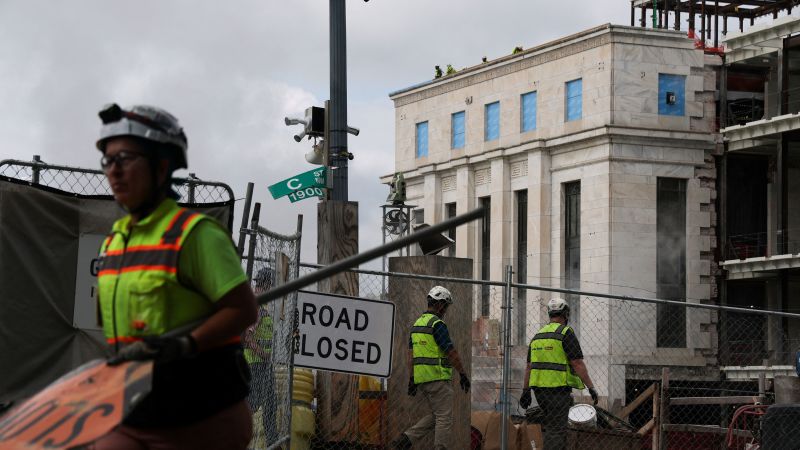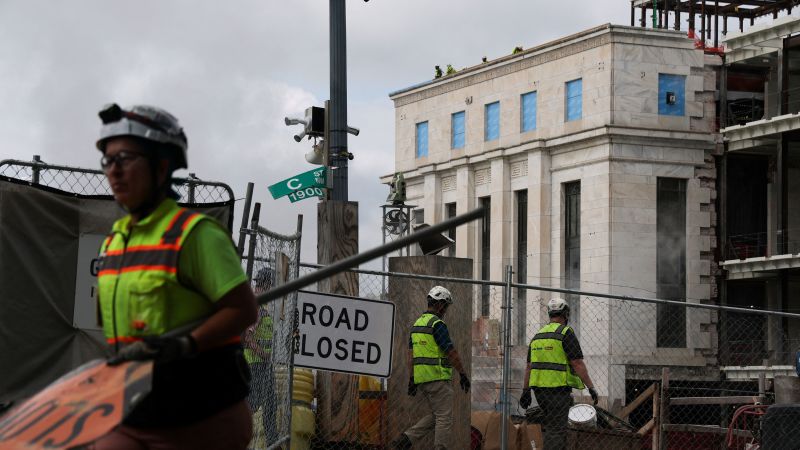
Trump’s Latest Battleground: The Federal Reserve
In a stunning escalation of his ongoing feud with the Federal Reserve, former President Donald Trump has suggested that the central bank’s $2.5 billion renovation plan could be a fireable offense for Fed Chair Jerome Powell. This latest attack marks a significant development in Trump’s persistent criticism of the Fed and its monetary policies, particularly interest rates. The former president has long been vocal about his desire for lower interest rates, a stance that has frequently put him at odds with Powell and the Fed’s decision-making. This situation is a clear indication of the political pressures that central banks face, especially in times of economic uncertainty.
Trump’s public statements have been nothing short of harsh. He has called Powell everything from a ‘numbskull’ to a ‘moron,’ demonstrating his frustration with the Fed’s policies. Now, the focus has shifted to the renovation plan, with Trump expressing his dismay at the expenditure. The timing of these attacks is noteworthy, as they coincide with a period of economic volatility and uncertainty about the future. It seems the former president is determined to maintain pressure on the central bank, even if it means challenging its independence.
The Federal Reserve’s role is crucial for maintaining economic stability. The constant criticism from Trump raises concerns about the potential erosion of the Fed’s independence. This independence is essential for the Fed to make data-driven decisions without being swayed by political considerations. This situation is a reminder of the delicate balance between political influence and economic policy. As the situation unfolds, it remains to be seen how the markets and the broader economy will react to these attacks.
Powell’s Unpopular Position
Jerome Powell has found himself in the crosshairs of Trump’s criticism for months. Trump has repeatedly demanded lower interest rates, arguing they would boost the economy. However, the Fed, under Powell’s leadership, has chosen to hold rates steady, much to Trump’s dismay. The central bank’s actions are often guided by economic data and its mandate to maintain price stability and full employment. The difference in opinion highlights the contrasting perspectives on how best to manage the economy.
The fact that the Fed has not lowered rates this year has fueled Trump’s frustration. He has openly expressed his disagreement with the Fed’s decisions, stating that rates should be much lower. He suggests that the Fed should be at 1% or even less. The economic decisions of the Federal Reserve significantly impact the financial market and the economic standing of the nation. The contrasting perspectives of Trump and Powell show the complexities in economic policymaking and how differing viewpoints can shape the decisions that affect all citizens.
Despite the criticisms, Powell has remained steadfast in his approach. He has emphasized the importance of the Fed’s independence and its commitment to making decisions based on economic data. The Fed is waiting to see the impact of tariffs before deciding to lower rates. This situation demonstrates the complexities and political influences inherent in the world of economics. The decisions made have wide-ranging impacts, further illustrating the need for careful consideration and an unbiased approach.
The Renovation: A New Target
The Federal Reserve’s renovation project, originally approved in 2017 at a cost of $1.9 billion, has become a new point of contention for Trump. The project, which began in 2021, has seen its budget swell to $2.5 billion due to ‘unforeseen conditions.’ These conditions include issues such as the discovery of asbestos, soil contamination, and a higher water table than anticipated, according to the Fed’s website. This cost increase has provided Trump with a new line of attack against Powell and the Fed.
Trump has seized on the renovation’s cost as evidence of mismanagement and extravagance. This approach allows him to frame the issue in terms of wasteful spending, resonating with his base and providing a new angle to criticize the Fed. The increase in renovation costs has added fuel to the fire, as Trump portrays the project as an example of the Fed’s misallocation of resources. The former president is skillfully using the situation to bolster his arguments against the central bank.
The details of the renovation project have come under scrutiny. Trump’s comments and the increase in costs have raised questions about the Fed’s spending practices. This creates a clear political narrative, where Trump questions the financial decisions of the central bank. These factors make the issue a potential point of concern for those looking at public spending. The situation underscores the importance of transparency and accountability in the financial operations of public institutions, regardless of political implications.
Expert Opinions and Market Concerns
The attacks on the Fed have triggered reactions from various stakeholders, including Wall Street leaders and market analysts. JPMorgan Chase CEO Jamie Dimon has voiced concerns about the potential adverse consequences of political interference with the Fed. Dimon stressed the absolute importance of the Fed’s independence, not only for the current chair but also for future leadership. These remarks highlight the potential impact of political actions on market stability and the importance of maintaining the Fed’s autonomy.
Market participants generally favor independent central banks, which make interest rate decisions based on economic data and clear mandates, rather than political considerations. This preference stems from the belief that politically influenced monetary policy can lead to instability and undermine investor confidence. The markets often look for stability in monetary policy as they reflect expectations about the economy. The ongoing situation is a demonstration of the delicate relationship between political pressure and economic policy, with the potential for wide-ranging impacts.
The uncertainty created by Trump’s attacks on the Fed could unsettle markets and complicate the Fed’s ability to manage monetary policy effectively. The situation requires careful consideration and action to ensure economic stability. This situation illustrates the potential negative impacts of politicizing monetary policy and the importance of maintaining an independent and credible central bank.
The Road Ahead: What’s Next for the Fed?
The situation between Trump and the Federal Reserve remains tense, with the former president showing no signs of backing down from his criticism. Powell, on the other hand, is likely to continue to defend the Fed’s independence and its commitment to data-driven decision-making. The debate over interest rates, the renovation project, and the Fed’s future role in the economy is likely to continue. This situation underscores the critical role of the Fed in managing the economy and the importance of its independence. The potential impacts of these actions on the market and the economy will continue to unfold.
Trump’s persistent attacks have raised serious questions about the Fed’s independence and the potential for political interference in monetary policy. The situation has underscored the importance of maintaining an independent and credible central bank. The interplay between political and economic forces will continue to shape the monetary landscape in the years to come.
The situation with the Federal Reserve and Trump’s actions underscore the complex relationship between political influence and economic policy. The future of the Fed, its independence, and its ability to effectively manage the economy will be closely watched. The central bank is responsible for maintaining financial stability and economic growth, and its actions have far-reaching consequences for everyone. The path forward and how this plays out will be an important situation to watch.



